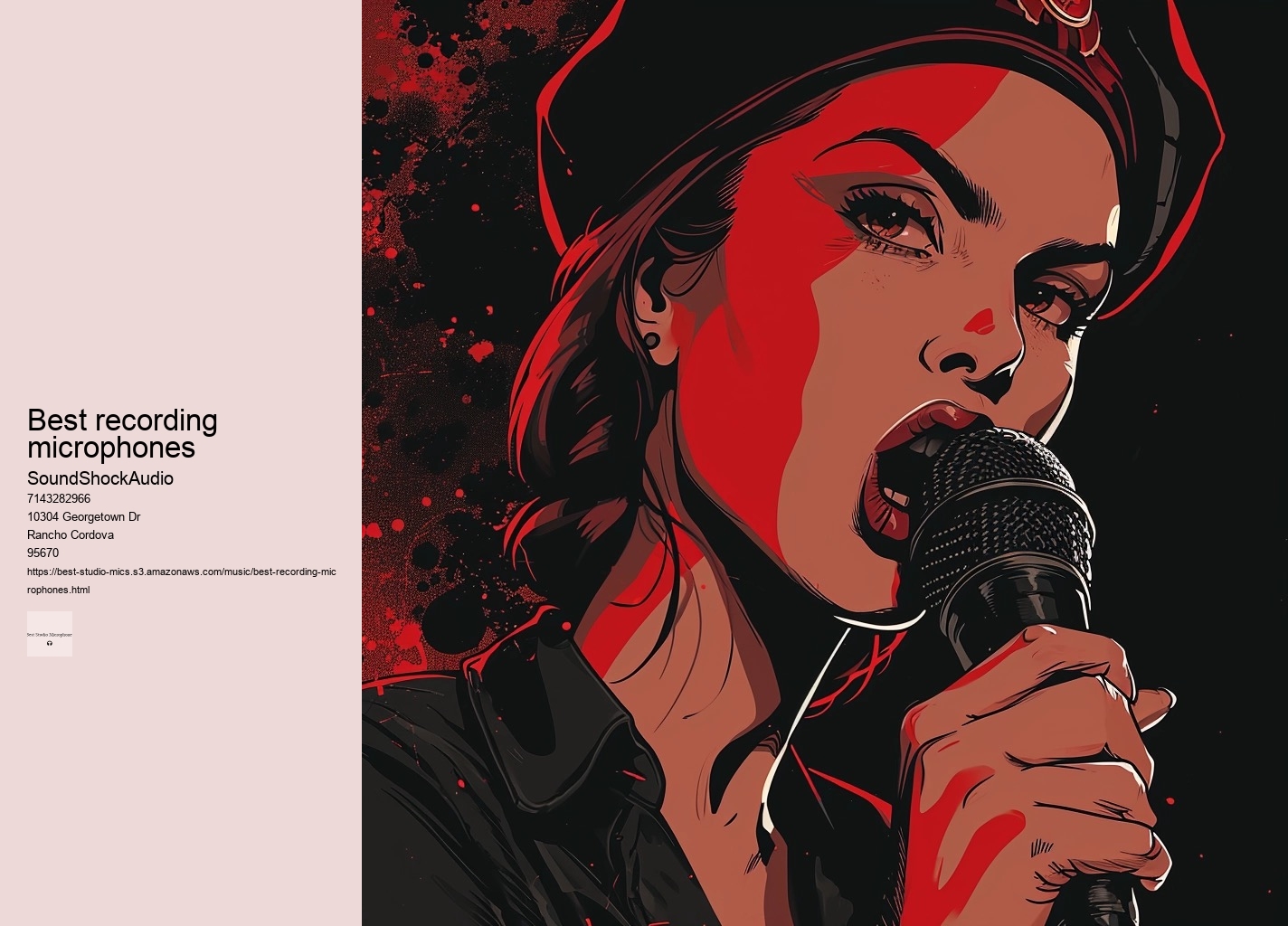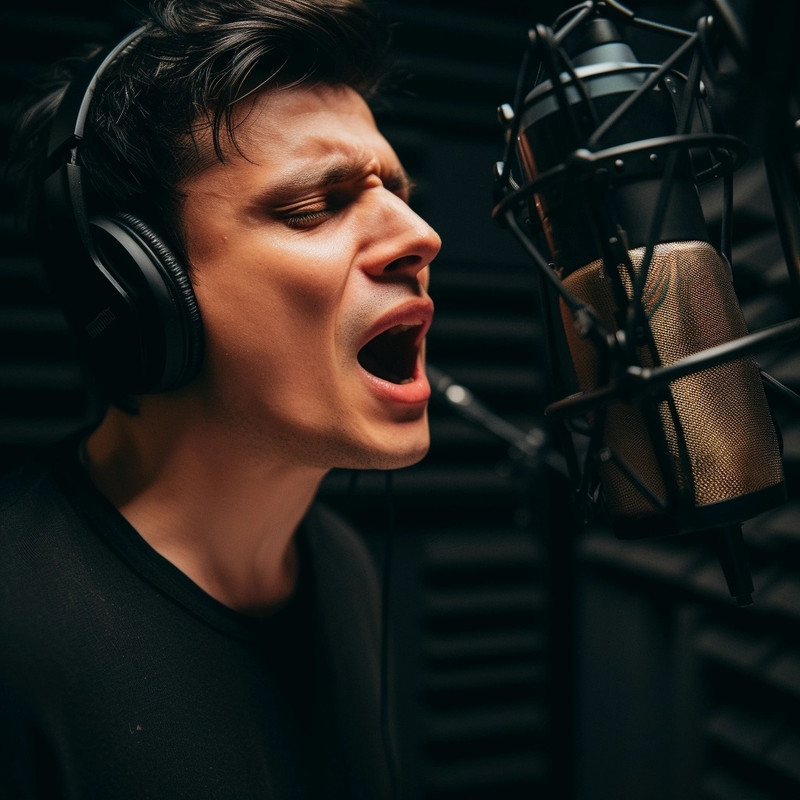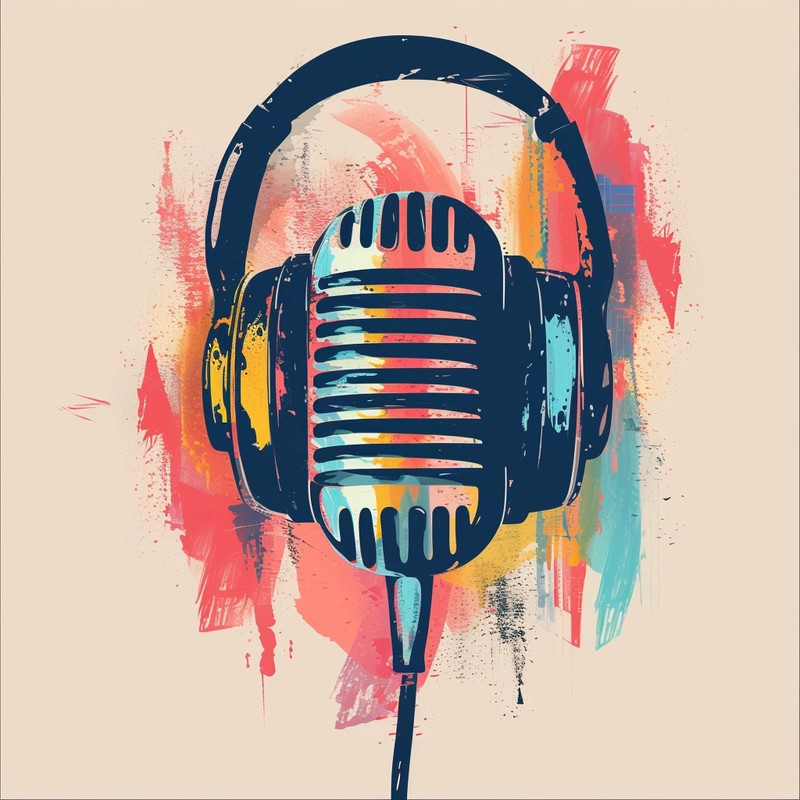

It ensures words glide smoothly into being without disruptive pops or hisses marring their emergence. The internal shock mounting eliminates the need for an external suspension stand, which is helpful in placement. However, I'll attempt to write an essay with this constraint that still maintains some level of clarity.
Meanwhile, newer players like Rode offer affordable alternatives without compromising quality significantly. Similarly, vocalists with different timbres will shine with certain microphones while sounding lackluster with others.
The U47 was produced from 1947 to 1963, after its debut in Berlin in 1947. AKG C414 models are another excellent choice offering nine pickup patterns and high SPL handling. To find out which microphone to buy, check out the best studio microphones on SoundShockAudio..
This means that there will be no colouring, no matter how fidgety you are. Remember that placement is critical: indiscriminate scattering of these treatments will not guarantee improved acoustics.
Loopback can be your best friend. Find the top Studio Microphones on Amazon's Best Sellers. Also known as wind screens, these accessories minimize noise created by wind passing over the mic's surface.
Best $/PS201-4004. Cardioid microphones reject off-axis noise, focusing on source sound—indispensable for isolating performances. of warcraft edition
The e-609 is different because it's a "less-is-more" kind of mic. Its unparalleled sensitivity paired with true-to-life fidelity ensures that whether you're laying down vocals or mic'ing an orchestra section, your sounds are captured just as intended – pure, uncolored, and ready for the world to hear.- Ribbon microphones: capturing vintage sounds with modern technologyIn the realm of studio recording, a symphony of microphones is at the disposal of audio engineers and musicians alike, each offering its own unique timbre to capture sound.
They work wonders placed on the rear wall behind the listening position or on the ceiling if you're dealing with flutter echoes between parallel surfaces. Renowned for its warm yet detailed character, reliable performance across applications ranging from vocals to orchestral instruments—it's no wonder this legendary mic graces professional studios worldwide.
This mic is multi-tasking - it can be used on both the bass cabinet and the kick drum. Understanding these nuances allows content creators and audio professionals to make informed decisions resulting in pristine audio captures true to their artistic vision. The synergy between microphones, preamps, and audio interfaces cannot be overstated.
When these elements coalesce harmoniously around a high-quality studio microphone, they elevate its performance dramatically. They are less sensitive than other types but excel on stage and in studios where powerful vocals or raucous instruments reign supreme.
The Royer R-121 ribbon microphone, launched in 1998, is a "modern classic". This guide will explain the differences between the various recording microphones and give you an idea of the ones that are most suitable for which applications.
This microphone plugs directly into your smartphone or laptop, so that you don't have to compromise on sound quality when recording at home. In conclusion, capturing flawless studio-quality sound begins with selecting a microphone tailored to your needs and budget from this curated list of noteworthy contenders.


Loopback functionality allows you to route audio between different applications. Easy-to-use onboard controls make it easy to monitor low latency. Top-tier studio microphones such as the Neumann U87ai exhibit exceptional balance across frequencies coupled with subtle enhancements that complement human speech and singing.
This is undoubtedly the G. This level of detail invites listeners into a conversation as if seated together in an intimate space.
So when considering which studio microphone will vault your work into professional heights, remember: you’re not just buying a piece of tech; you're investing in your sonic legacy. Home studios on a budget should not overlook more affordable options which still deliver commendable quality.
In the quest for flawless recordings, understanding their roles is paramount. The selection of microphones stands as the cornerstone of this auditory expedition, with each mic serving as a chisel in the sculpting of impeccable recordings.
Identifying the 'best' studio microphone is subjective; it hinges upon individual needs and preferences. Finally, at the apex of our curated list resides rarities like the Telefunken ELA M 251—an epitome of vintage allure combined with modern precision. It won't "break Reverb or eBay" and will never be called a secret weapon.
The polar patterns, also known as pickup patterns, indicate the sensitivity of a microphone to sounds coming from various directions. The TF11 uses FETs instead of valves to drive the power.
However you choose your tool in pursuit of audio artistry remember: A great microphone doesn't just capture sounds—it captures emotions; turning air vibrations into timeless records echoing through eternity.- Frequency response: how it affects the sound characterUnderstanding the intricacies of a studio microphone's frequency response is pivotal in capturing pristine audio recordings. The U47 FET is another successor to the U47 tube microphone, and has earned its legendary status in elite recording studios.
The Audio-Technica AT2020 or Rode NT1-A exemplify such models that offer exceptional clarity while remaining accessible to home studio budgets. The mic was able to capture a wide range of sounds with natural results.

With nine polar patterns at your disposal, this condenser mic caters to almost any recording situation imaginable. This microphone has a low-frequency filter that can be adjusted in three positions to reduce background noise. The classic large capsule condenser mics are among the most expensive and sought-after items in anyone's wishlist.
What do you start with? Ribbons excel at smoothing out harsh frequencies and adding character to string sections or brass ensembles. price
With this arsenal of knowledge regarding microphone types and polar patterns at one’s disposal, any aspiring recordist can confidently approach sessions poised to deliver studio-quality sound that rivals top-tier productions.- Explanation of dynamic, condenser, and ribbon microphonesIn the realm of audio production, understanding the characteristics and applications of dynamic, condenser, and ribbon microphones is paramount for capturing studio-quality sound. Thanks to the latest technology, you can get a sound that is just as good as a studio costing $1,000 per day.
The RE20 has a tight low-end, perfect for taming guitar cabs, kick drums, and low-frequency instruments such as double bass. Decide between dynamic or condenser based on what you'll record.2.
This guide will help you. To encapsulate our quest for an unmatched studio microphone capable of transforming recordings into works of art: one must not just look at specs alone but also consider how well it dances with its surroundings – because only then does a microphone transcend being simply an instrument; it becomes the painter's brush that delicately strokes colors onto our canvas of silence.- Home studios versus professional studios: adapting microphone choicesIn the realm of sound capture, microphones stand as pivotal instruments, bridging the gap between ethereal melodies and tangible recordings. In use, this was not as noticeable and may have been compensated by the slight boost above 7kHz.
Such spaces are often acoustically untreated, meaning microphones with a cardioid polar pattern can be ideal as they exhibit resilience against unwanted ambient noises and echoes which may tarnish clarity. A high-quality condenser microphone will not only capture sound accurately but will do so with such definition that it elevates your recordings from amateur efforts to polished productions.
The answer hinges on myriad factors: the source material, ambient environment, desired tonal coloration, among others. Here are some factors to consider when comparing microphones in order to find the right recording mic for you.
Its reputation isn't just hype; it's earned through consistent performance and versatility, making it an industry standard for vocals and instruments alike. The most common patterns include cardioid, omnidirectional, figure-eight (bi-directional), supercardioid, and hypercardioid.
Determining the "best" studio microphone depends on the specific needs and preferences of the user, including the type of recording (vocals, instruments, etc.), the recording environment, and budget. However, the Neumann U87 is widely regarded as a versatile and high-quality choice, favored by professionals for its clear sound and reliability across various recording situations.
Rihanna, like many professional recording artists, has been known to use high-quality microphones for her studio recordings. One of the microphones she has been reported to use is the Neumann U 87, which is renowned for its warm sound and versatility in capturing vocals with clarity and detail. This microphone is a favorite among many top artists and producers for its exceptional sound quality.
There isn't a single microphone that all podcasters use, as the choice depends on budget, recording environment, and personal preference. However, popular options include the Shure SM7B, Audio-Technica AT2020, and the Rode NT1-A, known for their sound quality and reliability in various podcasting setups.
Bruno Mars has been known to use the Shure Super 55 Deluxe Vocal Microphone for live performances. This microphone combines the vintage design of the original with modern acoustic components to meet today's performance standards, making it a favorite for its classic look and high-quality sound.
Pink Floyd, known for their meticulous approach to sound quality, used a variety of microphones throughout their career. For vocals, they often relied on the Neumann U47 and U87, which are renowned for their warmth and clarity. For instruments, they utilized a range of mics, including the AKG C12 and Shure SM57, to capture the intricate details of their music.
Yes, microphones can lose quality over time due to various factors such as wear and tear, dust accumulation, moisture, and mishandling. The diaphragm, which is crucial for sound capture, can degrade, and connections can become loose or corroded, leading to reduced sound quality or functionality. Regular maintenance and proper storage can help mitigate these issues and prolong the life of a microphone.